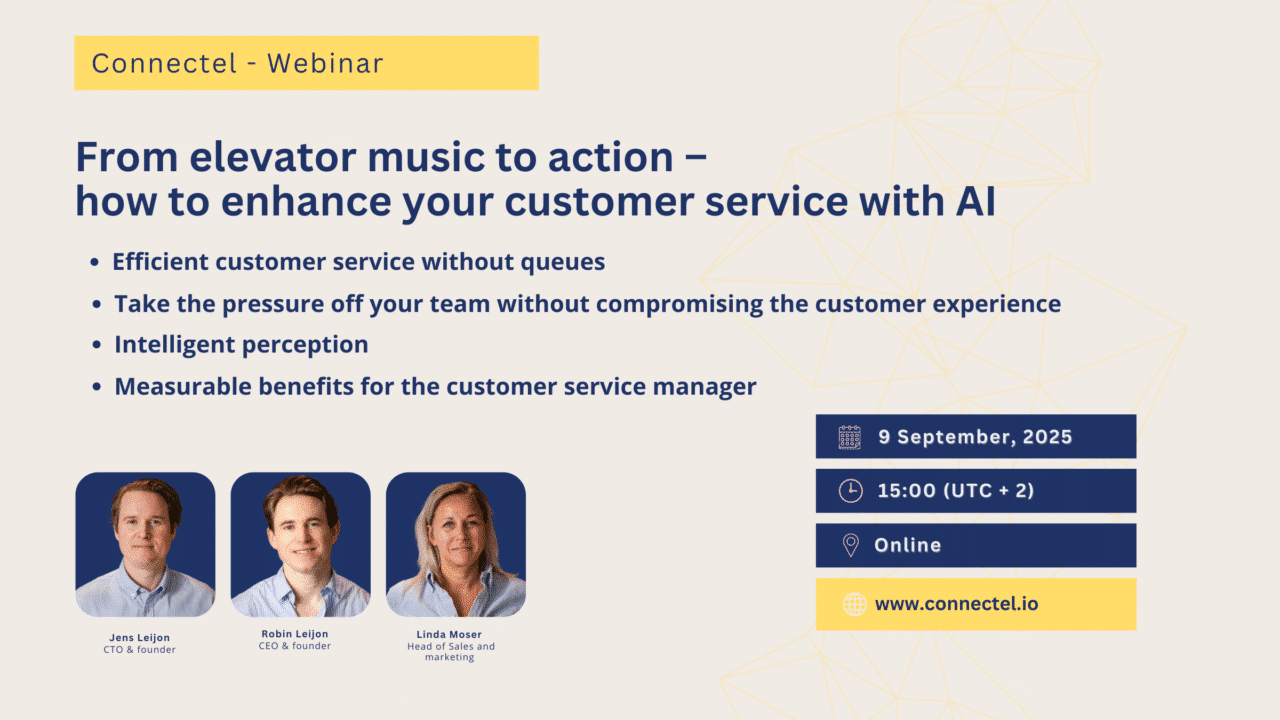
Turning customer dissatisfaction into satisfaction
Customer satisfaction is the cornerstone of any successful business. However, even the most customer-centric companies struggle with handling customer dissatisfaction and turning these cases to satisfied customers. While it’s impossible to please every customer all the time, the key lies in how you handle these situations. As a customer service manager, your ability to navigate difficult conversations can make all the difference in turning a dissatisfied customer into a loyal advocate. In this article, we will explore actionable insights and tips to help you master those challenging customer interactions and transform dissatisfaction into satisfaction.
Understand the customer’s perspective
To effectively address customer dissatisfaction, it’s crucial to put yourself in the customer’s shoes. Empathy is a powerful tool when turning customer dissatisfaction, and allows you to understand their perspective and emotions. Active listening plays a vital role in this process. Make an effort to truly listen and validate their concerns, even if you may disagree. Understanding their viewpoint will enable you to respond with empathy and find the best solution.
Remain calm and professional
Emotions can run high during difficult conversations, but it’s essential to maintain a calm and professional demeanor. Keep in mind that you are representing your company and that your response sets the tone for the entire interaction. Take a deep breath, stay composed, and respond thoughtfully. By remaining calm, you demonstrate that you value the customer’s concerns and are committed to finding a resolution.
Fast response time makes happy customers
Timely responses are crucial when dealing with dissatisfied customers. Promptly acknowledging their concerns conveys that you prioritize their satisfaction. Even if you can’t immediately provide a solution, a timely response shows that you’re actively working on their issue. Set clear expectations about the next steps, including follow-up communication, to keep the customer informed and reassured.
Seek to understand the root cause
Customer dissatisfaction often stems from underlying issues that need to be addressed. During difficult conversations, focus on understanding the root cause of the problem rather than solely addressing the immediate concern. By digging deeper, you can identify patterns or areas for improvement in your products, services, or processes. This proactive approach not only resolves the current issue but also helps prevent future dissatisfaction.
Offer personalized solutions
Customers appreciate individualized attention and tailored solutions. Once you understand the root cause, provide options that address their specific needs. Empower your customer service representatives to make decisions and offer reasonable alternatives. Personalizing the solution demonstrates your commitment to their satisfaction and can turn a negative experience into a positive one.
Apologize and take responsibility
Apologizing is a powerful way to show empathy and acknowledge the customer’s feelings. Take responsibility for any mistakes or shortcomings on your part or your company’s. A sincere apology can go a long way in rebuilding trust and diffusing tension. Use “I” statements to express regret and demonstrate accountability, rather than shifting blame.
Communicate transparently
Transparency is crucial when dealing with customer dissatisfaction. Keep the customer informed about the progress and status of their issue. Be honest about what you can and cannot do, and explain the reasoning behind your decisions. Clear and transparent communication helps manage expectations, fosters trust, and ensures customers feel valued throughout the resolution process.
Learn from feedback
Every customer interaction, even a difficult one, presents an opportunity to learn and grow. Encourage your team to collect feedback from dissatisfied customers and use it as a stepping stone for improvement. Analyze recurring issues, identify patterns, and implement necessary changes to prevent similar situations in the future. Turning negative feedback into positive action is key to continuously enhancing the customer experience.
Conclusion
Handling difficult conversations with dissatisfied customers is a challenging but essential skill for customer service managers. By adopting an empathetic and proactive approach, you can effectively address customer concerns, turn dissatisfaction into satisfaction, and strengthen customer relationships. Remember to listen actively, remain calm and professional, offer personalized solutions, take responsibility, communicate transparently, and learn from each interaction. By mastering these techniques, you will empower your team to navigate challenging conversations successfully and ensure long-term customer satisfaction.


